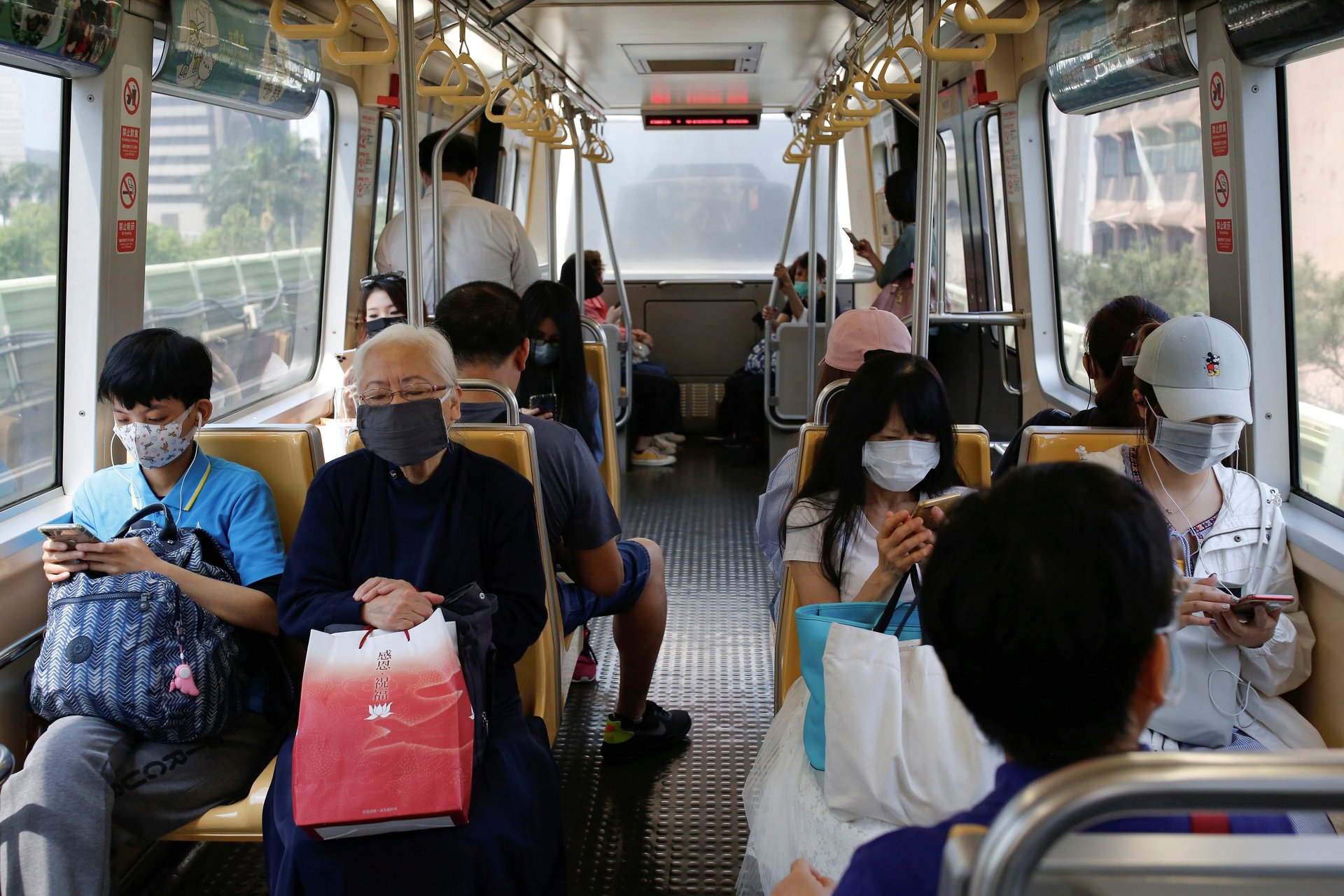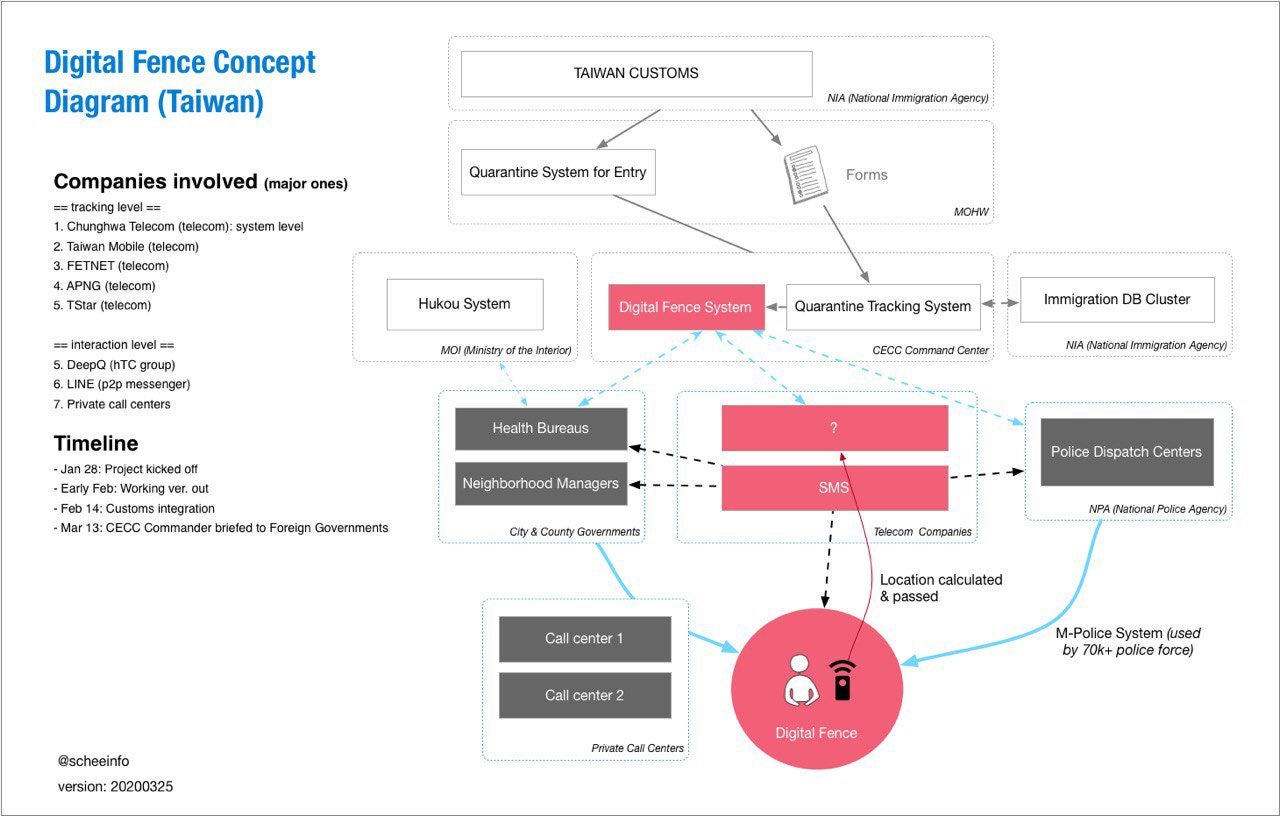How Taiwan is tracking 55,000 people under home quarantine in real time
Milo Hsieh woke up in Hsinchu, Taiwan, to the sound of someone knocking on his door at home on a recent Sunday morning. Bleary eyed, he went to answer it, only to find two police officers waiting. They had been dispatched after his phone triggered alerts that he may be breaching his mandatory 14-day quarantine.


Milo Hsieh woke up in Hsinchu, Taiwan, to the sound of someone knocking on his door at home on a recent Sunday morning. Bleary eyed, he went to answer it, only to find two police officers waiting. They had been dispatched after his phone triggered alerts that he may be breaching his mandatory 14-day quarantine.
“My phone had been out of battery for about 15 minutes, and when I turned it on I saw these warning texts,” and four missed calls from different administrative units, said Hsieh, who had travelled back to Taiwan after his study abroad program in Belgium was cut short due to the coronavirus pandemic. “I didn’t know that turning it off was going to trigger some sort of action.”
Hsieh’s experience is part of Taiwan’s extensive location-tracking apparatus, which is monitoring some 55,000 people currently under mandatory home quarantine in an effort to control the spread of Covid-19. It is just one of many countries leveraging cellphone location data to monitor the location and movements of people amid a global pandemic.
But Taiwan implemented the tracking system earlier than most, and its quick coordinated response has earned the country praise from people including New Zealand prime minister Jacinda Ardern and singer Ricky Martin. Taiwan has 322 confirmed cases as of March 31, out of a population of almost 24 million. In comparison, Australia, which has a similar population, has over 4,800 confirmed cases. An added challenge for Taiwan in its epidemic response is its exclusion from the World Health Organization as a result of a China-imposed diplomatic isolation, shutting it off from crucial and timely information.
Digital fence
The monitoring system in Taiwan is described as a “digital fence,” whereby anyone required to undergo home quarantine has their location monitored via cellular signals from their phones. Venturing too far from homes triggers the alert system, and calls and messages are sent to the confinee to ascertain their whereabouts. Anyone caught breaching their quarantine can be fined up to NT$1 million ($33,000). As the National Communications Commission, which was involved in setting up the tracking system, put it: “They’ll find you and fine you.”
Taiwan began working on the system in late January, only a week after the country recorded its first imported case of the novel coronavirus from Wuhan, the Chinese city where the outbreak was discovered. On the evening of Jan. 28, while many across the country were still busy celebrating the Lunar New Year holidays, officials from different departments and agencies gathered to discuss ways to monitor the growing number of people who were expected to have to undergo quarantine in the coming days. They explored different options, including tracker wristbands—the system implemented in Hong Kong—but ultimately settled on using a phone-based digital fence system, which they felt would be less intrusive. Within days (link in Chinese), the system was up and running.
“We deployed this system early… in order to prevent the epidemic from seriously overburdening personnel,” said Chen Chi-mai, vice premier of the executive branch of Taiwan’s government, who led the effort to set up the electronic monitoring system. “There were a lot of people coming back from China everyday… if we were to use traditional quarantine methods, it would be impossible to monitor everyone.” Though China has in effect stopped the flow of visitors to Taiwan due to its displeasure with the island’s ruling government, millions of Taiwanese still live and work across the strait and travel back and forth between the two places.
The fast adoption of the digital fence system in Taiwan is in part a reflection of the way the country’s vibrant civic-technology culture has shaped the government’s pandemic response. Early in February, for example, citizen developers built a digital, real-time map of mask stocks at drug stores, and the government quickly reached out to collaborate.
“Taiwan loves tech and it’s got enough engineers to do this kind of thing,” said T.H. Schee, an entrepreneur and tech policy consultant in Taipei.
Working with the country’s five major telecoms companies, the system tracks the quarantined individual by triangulating the location of the their phone relative to nearby cell towers. “Each telecom company has a different way of calculating the location of the phone, including how far it is from the cell reception tower and its direction in relation to the tower,” said Jyan Hong-wei, director general of Taiwan’s cybersecurity department. “As long as the phone is turned on, we can figure out the location. And if the phone is turned off, we’ll know that, and we can send a message to front line administrative or police officers so they can follow up.”
So far, Jyan said, the system has been very accurate, with only about 1% of alerts being false alarms. Mostly, inaccurate location readings have been due to a phone being in a rural area with spotty signal reception, or high up in a tall building where it picks up signals from faraway cell towers.

And what if someone simply leaves their phone at home and ventures out? The Taiwanese authorities have a way to plug that loophole, too. The police has deployed what it calls the M-Police system, which was first established in 2007 (link in Chinese) and gives officers cloud-based access to numerous databases—including, now, a database of individuals under quarantine orders. The police then fan out to popular gathering places like bars and karaoke parlors, checking the identities of patrons to see if anyone matches up with the list of quarantined individuals. Officers have already caught more than a dozen (link in Chinese) quarantine offenders this way, and handed them hefty fines.
Trust in government
Both Schee and Hsieh, who is due to complete his home quarantine this week, are worried about the privacy implications of the digital fence system and the vast amount of personal data collected by the government. “You’re deploying the tech so far without testing, and… at such a large scale… It’s unprecedented. First it’s bound to be intrusive and second, error prone,” said Schee.
They both pointed out that while there’s broad public support for the digital surveillance, many people don’t fully understand how the technology works. “The main worry is not knowing what it is, not knowing that turning my phone off means the police will come knocking, not knowing how they’re triangulating my coordinates,” Hsieh said, adding that the onus should be on the government to explain the technology clearly.
The government has said the tracking system would be discontinued after the pandemic passes.
For now, public opinion appears firmly in support of how the Taiwanese government has handled the pandemic. A telephone poll conducted in mid-February by the Taiwanese Public Opinion Foundation found that people on average gave the government a score of 84 points out of 100 (link in Chinese) for its epidemic response.
Paul Wu, a 34-year-old artist who is also under home quarantine after cutting short his artist residency program in Paris, said he understands concerns about the government’s increased powers of surveillance, but that he’s ultimately at ease with the large-scale phone tracking system. “Just to label this as a digital surveillance or authoritarian is kind of unfair for me,” he said. “I think people have a basic trust in the government and what they’re doing at the moment.”